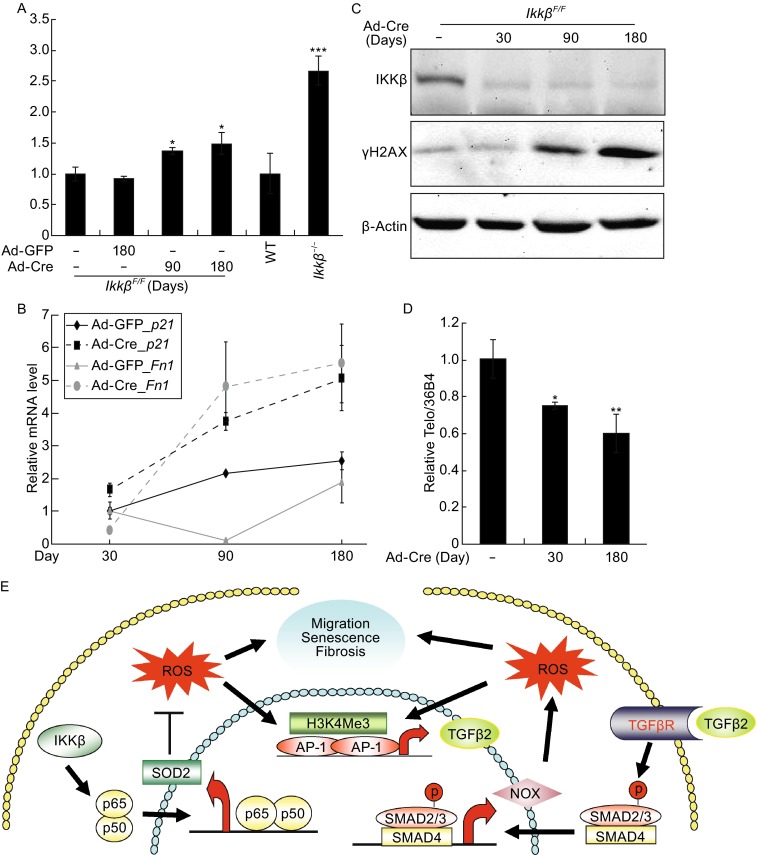Figure 7.

Phenotype of the IKKβ-deficient cells. The wild type, Ikkβ −/−, Ikkβ F/F/Ad-GFP and Ikkβ F/F/Ad-Cre cells were examined for (A) SA-β-gal activity, (B) expression of senescent markers, p21 and Fn, (C) expression of IKKβ, β-actin and γH2AX, a marker for DNA damage, and (D) the telomere length. Results represent the mean values ± SD from at least three independent experiments. * P < 0.05, ** P < 0.01 and *** P < 0.001 were considered significantly different from the wild type or control samples. (E) A proposed model depicting the role of IKKβ in the regulation of the ROS-TGFβ autocrine amplification loop. Specifically, IKKβ acts through p65 to regulate expression of anti-oxidant genes, such as SOD2. Loss of IKKβ decreases SOD2 expression and dampens the scavenger capacity, resulting in ROS accumulation and AP-1/c-Jun activation. The AP-1/c-Jun regulates TGFβ expression thereby activating the TGFβ-NOX axis to further potentiate ROS accumulation. The amplification of the ROS-TGFβ-NOX axis eventually leads to increased cell migration, myofibroblast transformation and senescence
